TechnicoFlor
Technicoflor is an independent, family and French fragrance composition house
Build on a strong CSR policy for more than 15 years, Technicoflor has a will to develop fragrances as much creative as eco-responsible which encourage us everyday to conceive new shares in order to protect the planet, our first priority and for future generations.

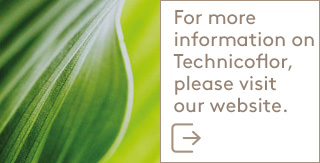
Context
In this context of ecological emergency where it is a priority to protect the environment, where consumers are even more responsible and expect more transparency, Technicoflor naturally wanted to develop a tool that evaluate the impact of its formulas on environment and health.
Tool presentation
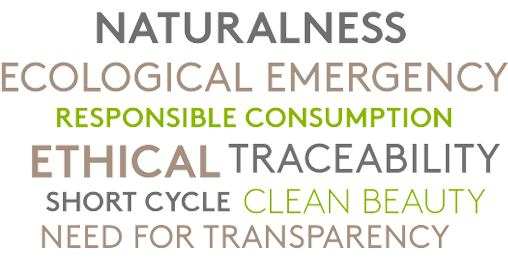
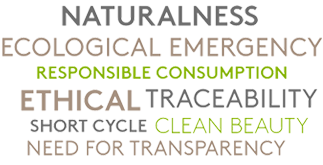
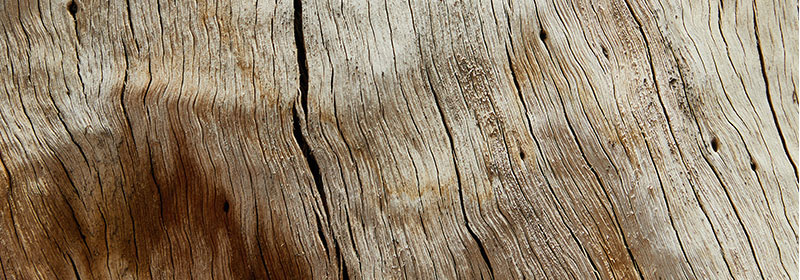
Objectives
The objectives of Technicoflor were to develop a rating tool with unique score that allows to:
- Give an environmental and societal score of our compositions to our customers
- Move towards more transparency : the final note, but also those from all steps and criteria will be presented in the certificate that will be given to the customers of Technicoflor.
- Identify areas of improvement : the tool’s automation and its access to creative and regulatory teams will enable to select in the collection fragrances more responsible, and to perfumers who have the score of their formulas at the time of creation, to set up the needed adjustments for more responsible formulas.
- Sensitize our stakeholders (suppliers, customers)
Design/ modelling of
Flor-Index®
Analysis of the development cycle allows us to identify criteria and quantify impacts of the different selected stages to lead up to the most efficient reduction actions.
3 essential stages
in the tool design
1. Identification
Of the 3 key stages
2. Definition
Of the scoring criteria
3. Delimitations
Of the indicators
Multi-steps approach:
Even if only 3 stages will be identified in visual way, all stages of life cycle will be represented.
Stages of the creation cycle
A comprehensive and evolving tool of eco-design.
A will to develop environment-friendly formulas and safe for Women and Men.
Formulation
Responsible material
Fair material
Unnecessary solvent
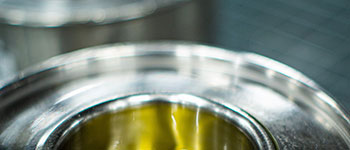
Production
Manufacture
Shipping

Fin de vie
Formula biodegradability
Health toxicity
Environment toxicity
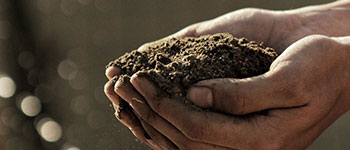
Focus on rating criteria
Approche multi-critères
The 8 rating criteria has to be:
- Assessed by measurable/ quantifiable indicators
- Informed or Informative in our internal tools for an automation of the tool.
- Delimited
- Known at the time of creation phase
3 main steps
defined by 8 criteria
assessed according to 38 indicators
Results presentation of Flor-Index®
Correspondence : final score / Flor-index®

Calculation method of Flor-Index®
Each indicator is assessed with a score out of 20, which after weighting gives a rating to each criterion.
Each criterion is weighted to give a score to each of these 3 stages.
Finally, each stage is weighted in turn in order to get a final score out of 20, associated with an A, B, C, D, E rating.
Only formulas with an A and B rating are considered as eco-designed.
Results are presented on a certificate which includes :
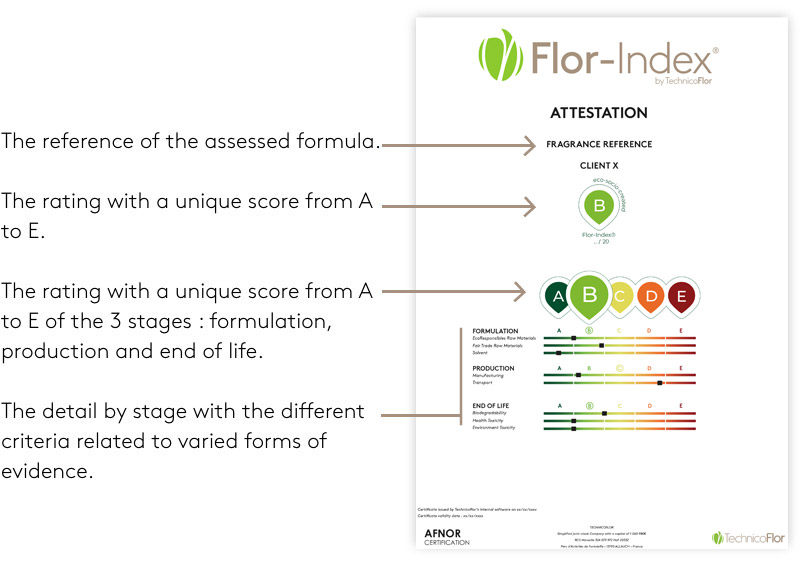
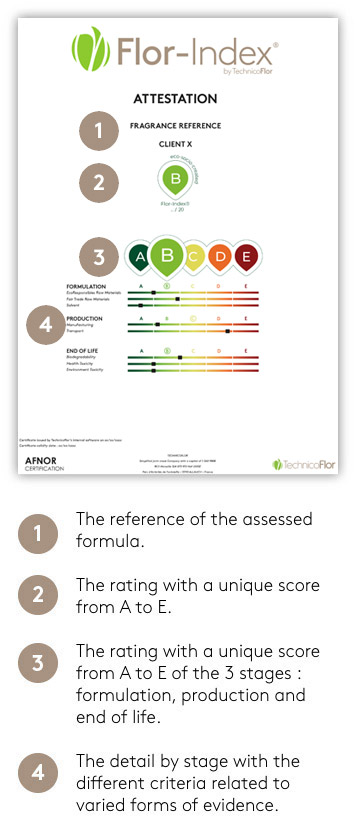
A calculation method approved by
AFNOR Certification
The independent third party body AFNOR Certification has approved relevance, transparency and robustness of Flor-Index®.

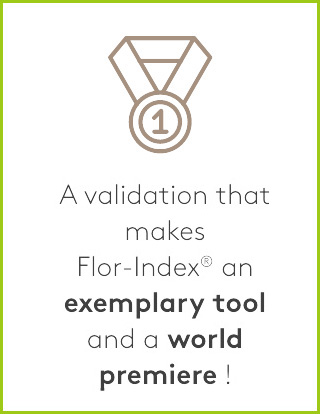
We have made an important step further in our will to master environmental and societal impacts of our formulas.
Flor-Index® offers to customers a totally new advantage and will bring in all our industry in the era of transparency and eco-design by making available a tool that enables customers to communicate on the use of an eco-designed fragrance with their distributors and consumers.
Maxime Gransart, Deputy General Manager of Technicoflor.
According to Directive 2009/125/EC 2 of the European Parliament and of the Council of October 21, 2009 establishing a framework for the setting of ecodesign requirements for energy-related products, ecodesign is “the integration of environmental aspects into product design in order to improve the environmental performance of the product throughout its life cycle”. Significant environmental impacts and aspects must be taken into account throughout the product’s life cycle. The company must be able to provide relevant, measurable, verifiable and concrete evidence that it has implemented an eco-design approach for the product in question.